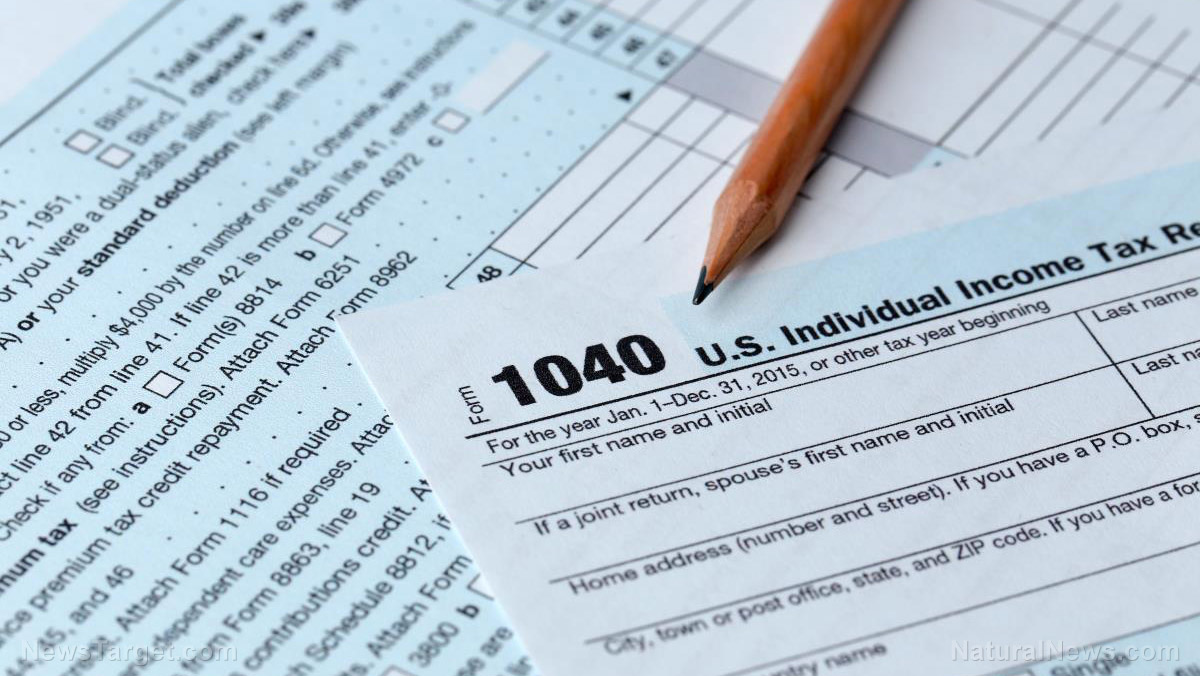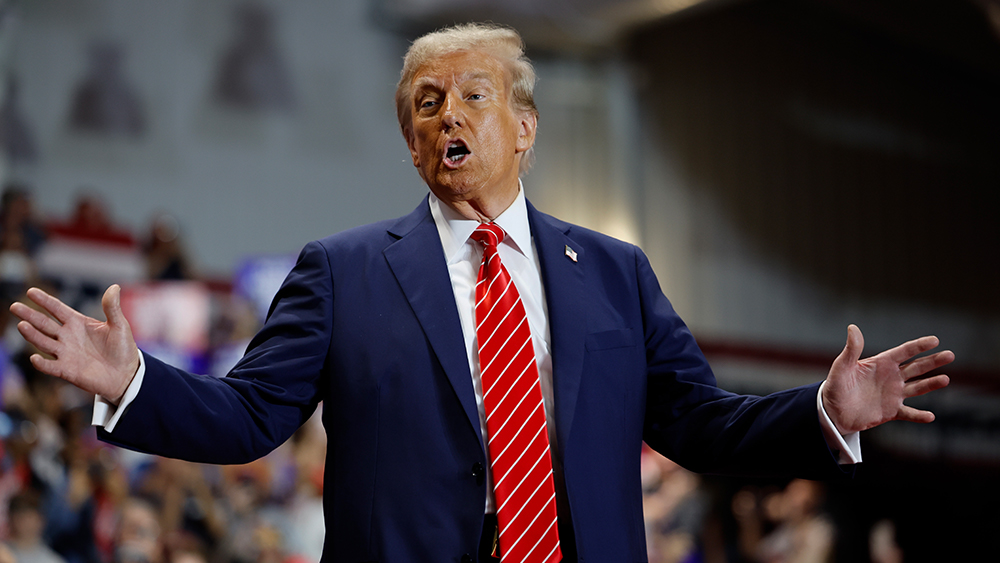Trump wants to ABOLISH THE IRS and shift tax burdens to foreign entities, freeing Americans from financial slavery
02/21/2025 / By Lance D Johnson

In a bold and transformative vision for America’s economic future, former President Donald Trump has proposed abolishing the Internal Revenue Service (IRS) and reallocating the tax burden to foreign corporations that currently exploit loopholes to avoid U.S. taxes. Commerce Secretary Howard Lutnick detailed the plan during a recent appearance on Fox News’ Jesse Watters Primetime, outlining a strategy that could fundamentally reshape the U.S. tax system, empower American workers, and hold international businesses accountable.
The proposal, which has sparked both excitement and debate, aims to close tax loopholes used by foreign entities—such as cruise lines and supertankers registered under foreign flags—while lowering tax rates for American citizens. “His goal is to abolish the Internal Revenue Service and let all the outsiders pay,” Lutnick said. “This is someone who is focused on America. Let’s drive down our waste, foreign abuse.”
Without an income tax, individuals would be able to thrive, keeping the fruits of their labor and investing their money where they see fit.
A new era of individual and economic freedom
At the heart of Trump’s plan is a commitment to ensuring that foreign corporations contribute their fair share to U.S. government revenues. Lutnick highlighted how foreign alcohol imports, for example, currently enter the U.S. tax-free, while supertankers registered in countries like Liberia and Panama avoid U.S. taxes altogether. “Every supertanker, none pays taxes. Alcohol, all foreign alcohol, no taxes,” Lutnick explained.
Under the proposed plan, these loopholes would be closed, and foreign entities would be required to pay taxes on their U.S. operations. “This is going to end under Donald Trump, and those taxes are going to be paid,” Lutnick declared. “And Americans’ tax rates are going to come down.”
The plan represents a dramatic shift in U.S. tax policy, one that prioritizes American workers and businesses over foreign corporations. By eliminating the IRS, the proposal would also reduce the size and scope of the federal government, allowing Americans to keep more of their hard-earned income.
The IRS and public distrust
The IRS has long been a lightning rod for criticism, particularly among conservatives. A July Pew Research poll found that 50% of Americans hold an unfavorable view of the agency, with Republicans citing its history of targeting conservative groups. In 2017, the IRS apologized for improperly subjecting right-leaning tax-exempt organizations to heightened scrutiny and delays.
Opposition to the IRS intensified under President Joe Biden, who sought to expand the agency’s workforce by adding 87,000 new employees over a decade. Former IRS Commissioner Danny Werfel, appointed by Biden, aimed to increase staffing to 100,000 as part of a modernization strategy. However, Werfel resigned after Trump assumed office, and the agency’s expansion plans were halted.
Trump’s proposal to abolish the IRS aligns with his broader vision of reducing government overreach and empowering individuals. By shifting the tax burden to foreign entities, the plan would not only lower taxes for Americans but also address long-standing concerns about the IRS’s role in American life.
Adding an intriguing layer to the story, Elon Musk’s Department of Government Efficiency (DOGE) has reportedly begun reviewing the IRS’s operations. Gavin Kliger, a DOGE staffer, recently arrived at the IRS headquarters to assess the agency’s functions, risks, and operational plans.
While details of the review remain under wraps, the involvement of Musk’s team suggests a potential overhaul of the agency’s structure and efficiency. The move underscores the growing momentum behind efforts to reform—or even eliminate—the IRS, as part of a broader push to streamline government operations and reduce waste.
Attempts at income tax date back to the Civil War
The concept of an income tax in the United States dates back to the Civil War. In 1861, to fund the war effort, Congress passed the Revenue Act, which included a tax on personal incomes. This was the first time the federal government imposed an income tax. The tax was initially 3% on incomes over 800, which was a significant amount at the time. In1862, Congress revised the tax structure, introducing a progressive tax.
After the Civil War, the income tax was repealed in 1872. However, the idea of an income tax resurfaced in the late 19th century as a way to address economic inequality and reduce reliance on tariffs, which were seen as regressive. In 1894, Congress passed the Wilson-Gorman Tariff Act, which included a 2% tax on incomes over $4,000. This tax was short-lived, as the Supreme Court ruled it unconstitutional in 1895 in the case of Pollock v. Farmers’ Loan & Trust Co., stating that it was a direct tax not apportioned among the states as required by the Constitution.
The push for a federal income tax gained momentum in the early 20th century, culminating in the ratification of the 16th Amendment to the Constitution in 1913. This amendment granted Congress the power to levy an income tax without apportioning it among the states. Shortly after, Congress enacted the Revenue Act of 1913, which imposed a 1% tax on net personal incomes above $3,000, with a surtax of up to 6% on higher incomes.
The income tax became a significant source of federal revenue during World War I. The War Revenue Act of 1917 significantly increased tax rates and expanded the tax base to help finance the war effort. By the end of the war, the top marginal tax rate had risen to 77%.
During the Great Depression, the federal government increased income tax rates to fund New Deal programs. The Revenue Act of 1935 introduced higher taxes on the wealthy, with a top marginal rate of 79%. World War II further expanded the income tax system. The Revenue Act of 1942 introduced withholding taxes on wages, making income tax collection more efficient. By the end of the war, the tax base had broadened significantly, and the top marginal rate reached 94%.
In the post-war period, the income tax system underwent various reforms. The Internal Revenue Code of 1954 codified federal tax laws and introduced new provisions. The 1960s and 1970s saw further changes, including the introduction of the Alternative Minimum Tax (AMT) in 1969 to ensure that high-income individuals paid a minimum level of tax.
The Tax Reform Act of 1986, signed by President Ronald Reagan, was a major overhaul of the tax system. It simplified the tax code, reduced the number of tax brackets, and eliminated many tax shelters. More recently, the Tax Cuts and Jobs Act of 2017, signed by President Donald Trump, made significant changes to individual and corporate tax rates, doubled the standard deduction, and limited certain deductions.
Trump’s plan to abolish the IRS during his second term and shift the tax burden to foreign entities represents a bold re-imagining of America’s economic future. By closing loopholes, lowering taxes, and reducing government intervention, the proposal seeks to empower American workers and businesses, allowing them to thrive without the weight of excessive taxation.
Sources include:
Submit a correction >>
Tagged Under:
big government, business, constitution, DOGE, economic freedom, economic riot, External Revenue Service, finance, government debt, government taxation, income tax, individual freedom, IRS, IRS overhaul, money supply, progressive tax, streamlined approach, Trump
This article may contain statements that reflect the opinion of the author
RECENT NEWS & ARTICLES
COPYRIGHT © 2017 BUBBLE NEWS




















